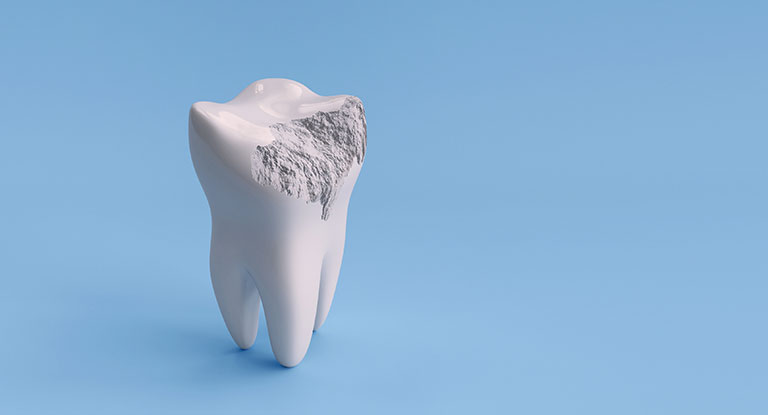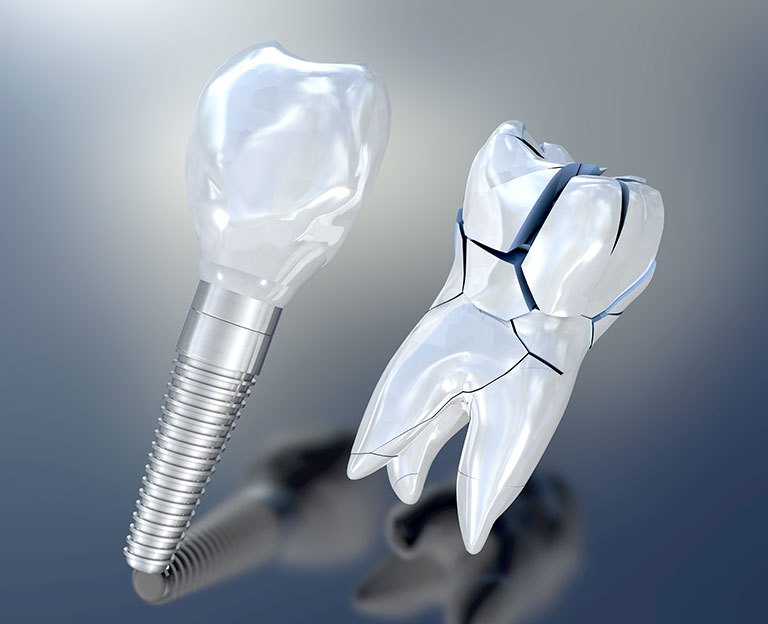

Although the teeth are known to be remarkably strong, they are still prone to fracture and cracking. Cracks in teeth may be visible in some persons. Tooth sensitivity is a common symptom of cracked tooth.
You need to fix an appointment with your dentist if you suspect that you have a fractured (cracked) tooth. Leaving a fractured tooth untreated may lead to some complications such as severe pain and discomfort. Many feel pain when they chew because of the pressure chewing exerts on the broken or fractured tooth. Pain associated with a fractured tooth is not always at its peak; the intensity usually fluctuates. This usually makes it quite difficult for a dentist to locate the crack on a tooth, most especially if it is very small.
What Are the Causes of Broken Teeth?
Broken or fractured teeth can be caused by one or more of the following:

It is not easy to diagnose a broken tooth or a fractured tooth. If there is no visible crack on a tooth, your dentist will ask about your dental history and symptoms you are experiencing. Your response might help diagnose.
Your dentist will then proceed to examine your teeth — a magnifying glass can be used to help identify cracks. A pointed instrument called a dental explorer can also be used to catch on any rough & cracked edges on the surface of your teeth.
A dental dye can also be used your dentist to make all the cracks on your teeth more visible. Your dentist will initially check your gums for inflammation. Signs of inflammation can be seen because cracks in teeth can irritate your gums. You may also be asked to bite down on something, to pinpoint the location of the pain.
Your dentist may proceed to take an X-ray of your teeth. Although X-rays cannot reveal the locations of cracks in the teeth, problems in the pulp of the teeth can be revealed. An unhealthy pulp can suggest a crack.
You can’t treat a fractured tooth at home. You need to visit your dentist for assessment and treatment. Most times the affected tooth will look fine, but hurts only when you eat or drink something hot or cold. Frequent painful sensation in your tooth could mean that there is a damaged nerve or blood vessels. This is definitely a serious warning sign. Sometimes it might not hurt to bite on the tooth, but you can feel pain when you release the bite.
You need to visit your dentist as soon as possible if you have a broken tooth. Your dentist will be able to figure out the cause of the break, such as a cavity or damaged tooth nerve. If the broken teeth are caused by a damaged nerve, you might be required to undergo root canal treatment.
Before you visit your dentist, you can follow these tips to relieve symptoms:

There are different types of fractured teeth and broken teeth. Each type requires unique treatments. These include:
Minor cracks: Minor cracks are superficial cracks that affect only the external surface of the teeth (that is, outer white surface of the tooth, called the enamel). Your dentist might recommend Light polish of the area to smoothen rough spots.
Cracked tooth: This involves the whole tooth, that is, the entire tooth parts from the chewing surface down to the nerve are affected. Tooth Cracks can sometimes be repaired through filling. Cracked tooth often require filling material to prevent increased severity and complications, or even to make the tooth feel better. If the chip in the teeth is very small, your dentist may eventually polish the chipped area to smoothen it.
Vertical breaks or split root: These vertical cracks are initiated in the root of the tooth before it extends upward toward the chewing surface of the tooth. These breaks in the teeth are always painful due to the inflammation or infection of the root of the teeth.
Decay-induced break: A weakened tooth is broken or crumbled in this case. The weakening is usually due to a cavity from the inside out. Your dentist will evaluate the cavity and recommend the best treatment for you. The affected tooth can be removed in some cases if the decay is extensive and has affected bone.
To get more information on how to treat fractured teeth or broken teeth, you can contact us at Smile Works Dental.
To get started, simply walk into our dental clinic at Harley Street, London or call our hotline 020 71834091 to fix an appointment.